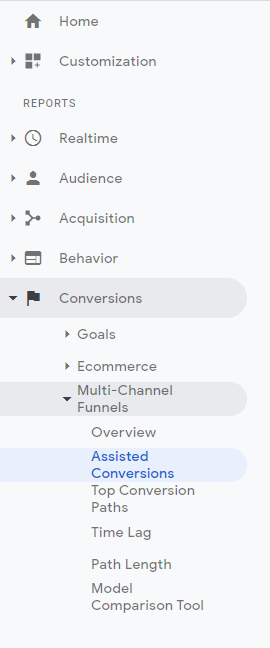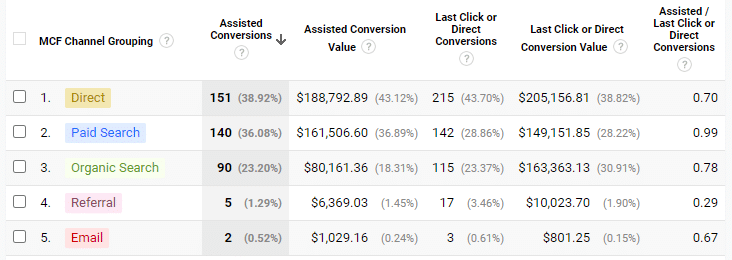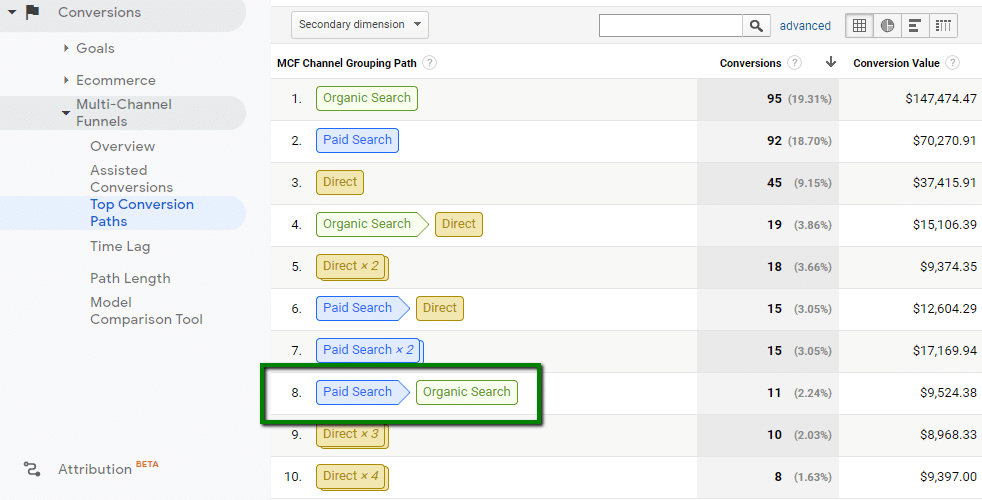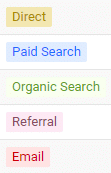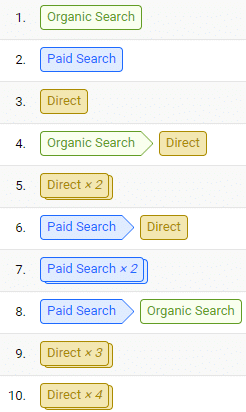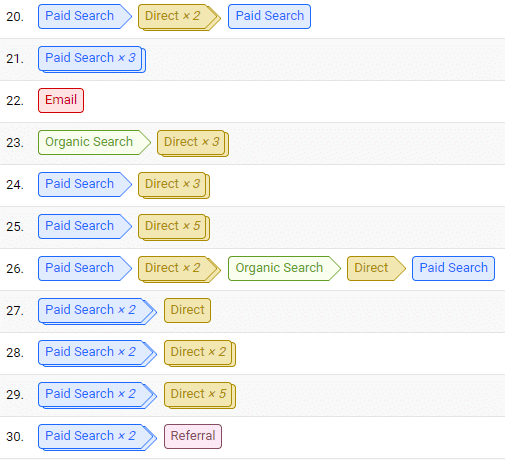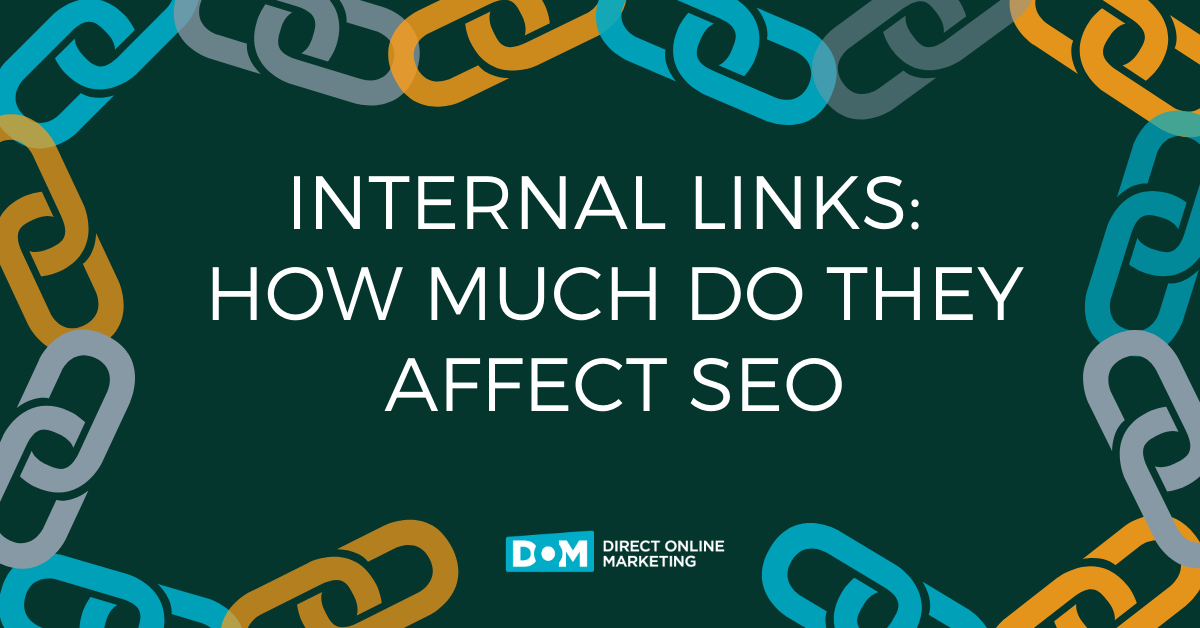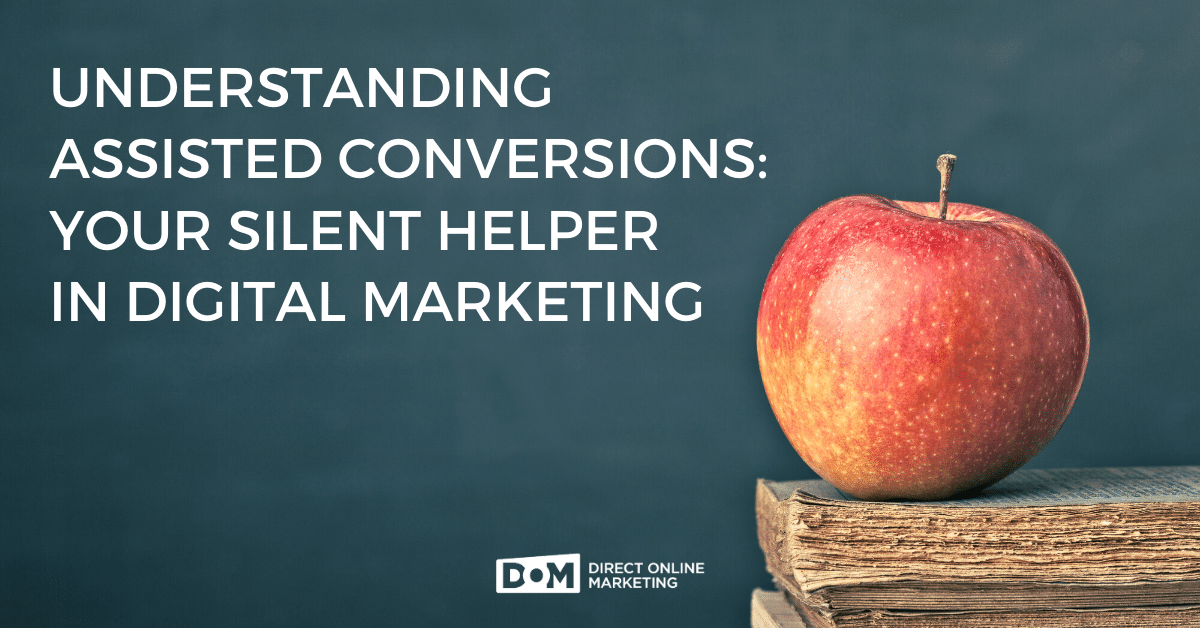
Editor’s Note: Looking for information on why you should be using assisted conversions in Google Analytics? Are you still using the traditional version of the platform – Universal Analytics? You are at risk of losing any of your historical performance data in 2023 if you don’t set up and properly configure Google Analytics 4. Learn how the two platforms compare to each other in this blog post – Google Analytics 4 vs Universal Analytics.
Understanding assisted conversions in Google Analytics can help you focus your digital marketing efforts. Assisted conversions are the silent supporters that push others into the limelight of conversion glory. In this post, we’ll dive into Google Analytics to see the synergy between various marketing channels. We’ll see how users take wandering paths to convert. With this perspective on user behavior in view, we’ll then pull out some actionable insights to improve performance in each channel.
Defining Assisted Conversions
To see assisted conversions in your Google Analytics account, follow this path: Conversions > Multi-Channel Funnels > Assisted Conversions
A channel is credited with an assisted conversion when the channel is part of a user’s path leading up to a conversion but was not the final channel that a user engaged with before entering your site and converting.
So consider this scenario: Paul searches for a jaunty beret and is served a search ad for Hats in the Belfry. He clicks on the ad, reads the landing page, but isn’t ready to buy. The next day Paul decides he does want the hat; this time he searches for the company’s name and enters the site from the company’s page that shows up in the SERP. Once on the site, he buys a beret.
In this case, Paid Search would be credited with an assisted conversion; Organic Search would be credited with a (standard) conversion.
Such a scenario would be recorded in a Google Analytics report like line 8 here in Top Conversion Paths:
Direct, Organic Search, Paid Search, Referral, and Email are common steps on a path. What you see in your Analytics, of course, depends on what digital marketing efforts you are employing.
Understanding Conversion Paths
Put another way, assisted conversions are credited to whatever traffic source is second to last under Top Conversion Paths.
Top Conversions Paths gives you a visual representation of the steps a user took before converting. It shows you what parts of your digital marketing efforts a user came in contact with leading up to a conversion.
For example, in line 4 here, Organic Search is counted as driving an assisted conversion, while Direct ultimately got the conversion itself.
In line 5, Direct is credited with both an assisted conversion and a conversion because Direct was both the last and second to last source that the user interacted with.
Lines 1, 2, and 3 show single-source conversions; that is, the user interacted with just one element of your digital marketing before converting, and there is no assisted conversion in these situations.
If you look further down, you’ll likely see more meandering paths. Each line tells a story of user experience.
Line 26 shows a user who began and ended their conversion journey with a click on a Paid Search, while making stops off along the way at Direct and Organic.
Acting on Insights from Assisted Conversions
You’ve studied your users’ conversion paths. You know the myriad ways they wander your digital marketing sources before converting. You know a bit more about your users and how Analytics records their activity. But at the end of the day, you want to know where to focus your efforts to drive more conversions.
Let’s take a look at the Assisted Conversions tab in-depth to derive some actionable insights.
First off, notice that this view lets you see how many assisted conversions a channel was credited with, as well as how many conversions proper the channel drove (via the column labeled “Last Click or Direct Conversions”).
Further, the column called “Assisted / Last Click or Direct Conversions” expresses the extent to which a channel acted in the assisting role versus the direct role in driving conversions.
A channel that garnered only direct conversions would score 0. A score of 1 would indicate that the channel got an equal number of assists and regular conversions. Any score above 1 signifies that the channel does more assisting than directly converting.
So what have we got here?
Direct
Direct traffic drives more conversions (of either stripe) than any other single source—this signals success in branding. You’ve gotten your name out there and people are responding. Keep an eye on direct traffic for the long term; use it as a gauge of how well-known your brand is. Generally, the more popular a brand, the more users go right to the site, rather than coming in through Paid Search, Referral, or Email.
Note that Organic Search numbers may still remain high for even the most established brands because many users type in the brand name to a search engine and click on the organic listing for the brand, rather than actually typing in a full URL to get to the brand’s site.
Actionable Insight
Compare Direct conversions to those from other channels to gauge how well you are marketing your brand.
Caution: the Direct category in Google Analytics is tricky. It is sometimes used as a catch-all when Analytics doesn’t know how to categorize an incoming user. Read this blog post to learn more: This Is Why Your Direct Traffic in Google Analytics Is So High.
Paid Search
Paid Search has the highest Assisted/Direct score: 0.99. This means that Paid Search campaigns drive about 1 assisted conversion for every conversion attributed to them. Paid Search is the most evenly balanced of the channels.
In light of all the assisted conversions that Paid Search is getting here, you might reconsider how you think about this channel’s performance. For the budget that you put towards Paid Search, you are getting a certain number of conversions, and an equal number of assists. It’s not quite 2 conversions for the price of 1, but clearly the Paid Search channel has a potent secondary effect on other channels.
Actionable Insight
Nurture channels that provide a high ratio of assisted conversion to direct conversions. It’s a 1–2 punch!
Dig into your paid search campaigns even deeper with help from this blog: How to Pinpoint PPC Performance Changes.
Organic Search
Organic Search drives the third-most conversions of any channel here and has the third-highest Assisted/Direct conversion ratio. Organic Search performance is indicative of the SEO strength of your site. If people search for your brand or what you do and find exactly what they’re looking for in the SERP, they are likely to enter your site and convert.
Actionable Insight
Optimize your site—implement SEO best practices in meta tags and H1 tags; publish authoritative content; make your site intuitive to navigate—to stand out to people who are searching for what you do.
Learn how DOM can help you with SEO.
Referral
The Referral channel records when people enter your site from a link within another site. This is called a backlink. You might have business partners that mention your site on theirs. Or perhaps you are listed on a site for the professional organization that you belong to. Maybe you’ve even established yourself on a business review site with evaluations from customers.
The relatively low ratio of assisted conversions compared to direct conversions makes sense here, and for referral conversions in general. Think about it, if people are already focused in enough on their query to be inside a site related to your industry, when they do finally click on your link and enter your site, they know what they want. And thus they likely to convert right then and there.
Actionable Insight
To garner backlinks, partner with other leaders in your industry and where appropriate link to each other on your sites, and offer customers the opportunity to review your efforts.
Use this channel to measure the success of your email campaigns. If your emails are primarily informational, then it may make sense that they primarily act in an assisting role. However, if you want to get more direct conversions from your email marketing, you may need to consider a redesign that employs conversion rate optimation (CRO).
Your goal is to get people in your audience to take some action. Perhaps that’s filling out a form, providing their opinion, or buying from you. Whatever you define as your goal, you can employ CRO to simplify your emails—in both form and content—to focus readers on a single call to action.
Actionable Insight
Define the goal of your email campaigns, and pursue CRO to drive users to convert directly.
To help you think through improving your email efforts, read our Email Marketing Strategies and Concepts: A Comprehensive Guide. For more on CRO, check out our Beginner’s Guide to CRO.
Summing Up
Google Analytics is a powerful tool. It can provide insight into every channel of your digital marketing. With a better understanding of assisted conversions in hand, you are ready to refine your efforts for better performance.
Good luck. And may every conversion always come with an assist.
Learn how to do more with Google Analytics from these articles:
- How Google Analytics Empowers Content Marketing Strategy
- Bounce Rate In Google Analytics (Everything You Should Know)
- Track ANY Form in Google Analytics in Under 5 Minutes
To get more information on this topic, contact us today for a free consultation or learn more about our status as Google Partners before you reach out.
